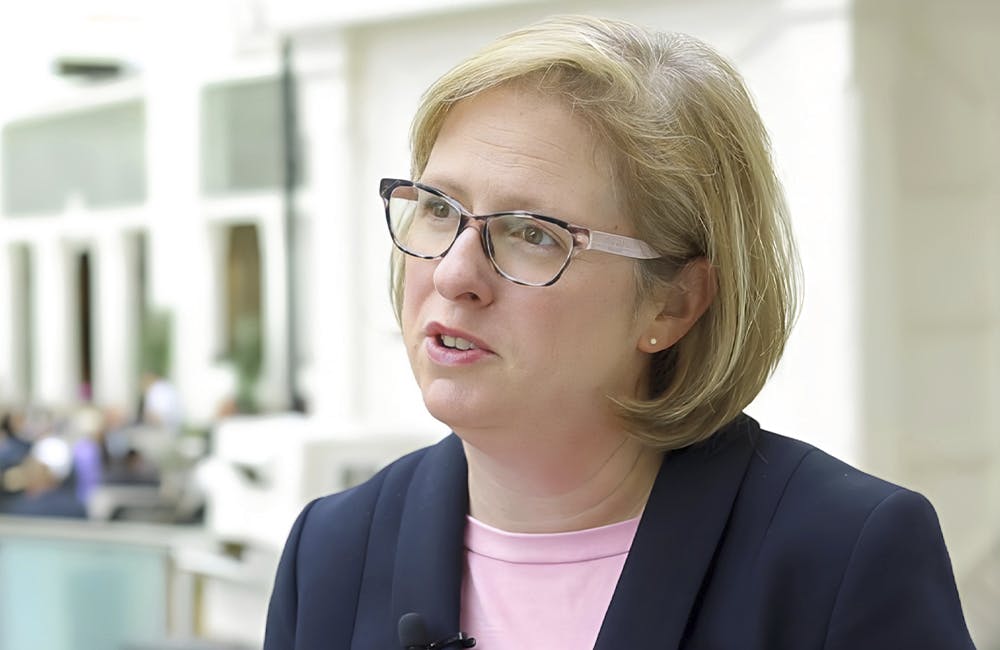HHS CIO Outlines Top Priorities
Among Jose Arrieta’s initiatives as new CIO include engaging with industry partners and testing advanced technology.

The Department of Health and Human Services is collaborating on various technology pilot programs with public and private-industry partners to automate workflow processes, aligning data-sharing strategies with security and human-centered design.
Leading the agency’s modernization efforts is CIO Jose Arrieta, who was recently appointed to the position in May. At the top of his priority list is direct engagement with industry partners, as he outlined during NextGov’s Emerging Tech Summit Wednesday.
One of the agency’s main operational priorities is “smart cloud” service adoption, but the agency has multiple migration methods to consider. With industry support, Arrieta said the agency is taking into account rationalization of applications, using cloud from a managed services perspective, moving data to a commercial cloud environment and building customized microservice during the transition.
Arrieta’s second priority as CIO is testing emerging technology that prioritizes user experience for the workforce.
“We want to actually create a ripple effect within our organization [and] test emerging technology leveraging human-centered design,” he said.
HHS is currently working on three emerging technology test pilots — one being the development and testing of behavioral-based identity at the edge of the network.
Done in partnership with the Defense Information Systems Agency, the security method works by collecting 240 behavioral characteristics of an individual — like iris and face scans and a user’s unique texting habits — and using those characteristics to verify user identity instantly. Traditional security authorizations like usernames and passwords would be unnecessary, Arrieta said, and instead of having to transmit security information across cyberinfrastructure, user identity would be directly stored on the accessible wireless device.
“That would be empowering,” said Arrieta.
Health care workers who require access to multiple devices in timely situations would especially benefit from the security method, since streamlining the login process would save time and allow them to focus on their work, he added. The pilot is still in its early brainstorming phase.
Another pilot program is the procurement and acquisition system, HHS Accelerate. Arrieta said the agency “engaged over 3,000 members in human-centered design sessions” and “built containerized microservices off of [a blockchain] attestation layer that executes actions of the acquisition life cycle” for 1.7 million contracts and 100,000 statements of work.
The system aims to lessen the burdens of industry partners by providing insight on prices paid in terms of conditions at the point of purchase, as well as enable program managers with information needed to do their jobs from the vendor portal, Arrieta explained. HHS expects to test the pilot this fall.
The third test pilot is a long short-term memory recurrent neural network (LSTM). Employing a set of algorithms and predictive modeling, this type of network can analyze statements of work and compare them with personnel data to determine whether work is inherently governmental and to identify cost saving, the CIO said. Moreover, all of the necessary data needed for the project was indexed at a low cost in just three weeks.
Acknowledging that the pilots are imperfect in their current usage states, Arrieta expressed that they are meaningful starting points in modernizing federal IT systems.
“The implications of where you go next is really game-changing for us,” he said.
In addition to his priority to improve cybersecurity hygiene, Arrieta said that in the long term, he will use emerging technology to create more network activity visibility so that agencies can take advantage of the agency’s shareable datasets.
“I’m not afraid to fail,” Arrieta admitted regarding his leadership and technology initiatives. “You have to own it and be transparent in what you’re doing — so that’s my approach.”
This is a carousel with manually rotating slides. Use Next and Previous buttons to navigate or jump to a slide with the slide dots
-

How Agencies are Upskilling the Workforce in AI
Federal officials are putting in place new training and education methods to ensure its overall workforce understands the technology.
3m read -

A Prepared Workforce is Key to Cyber Resiliency
Strong training strategies and emphasizing cyber hygiene basics enhance security practices at federal agencies.
2m read -

Navy Invests in Additive Manufacturing Workforce to Match Pentagon Strategy
DOD issued its Additive Manufacturing Strategy in 2021 to integrate with the private sector and create agile uses of the technology.
5m read -

Defense Officials: Cyber is a Sport That Needs Strong Teammates
Coast Guard, Marine Corps and Navy officials said they are working on new hiring strategies and partnerships amid evolving threats.
5m read







